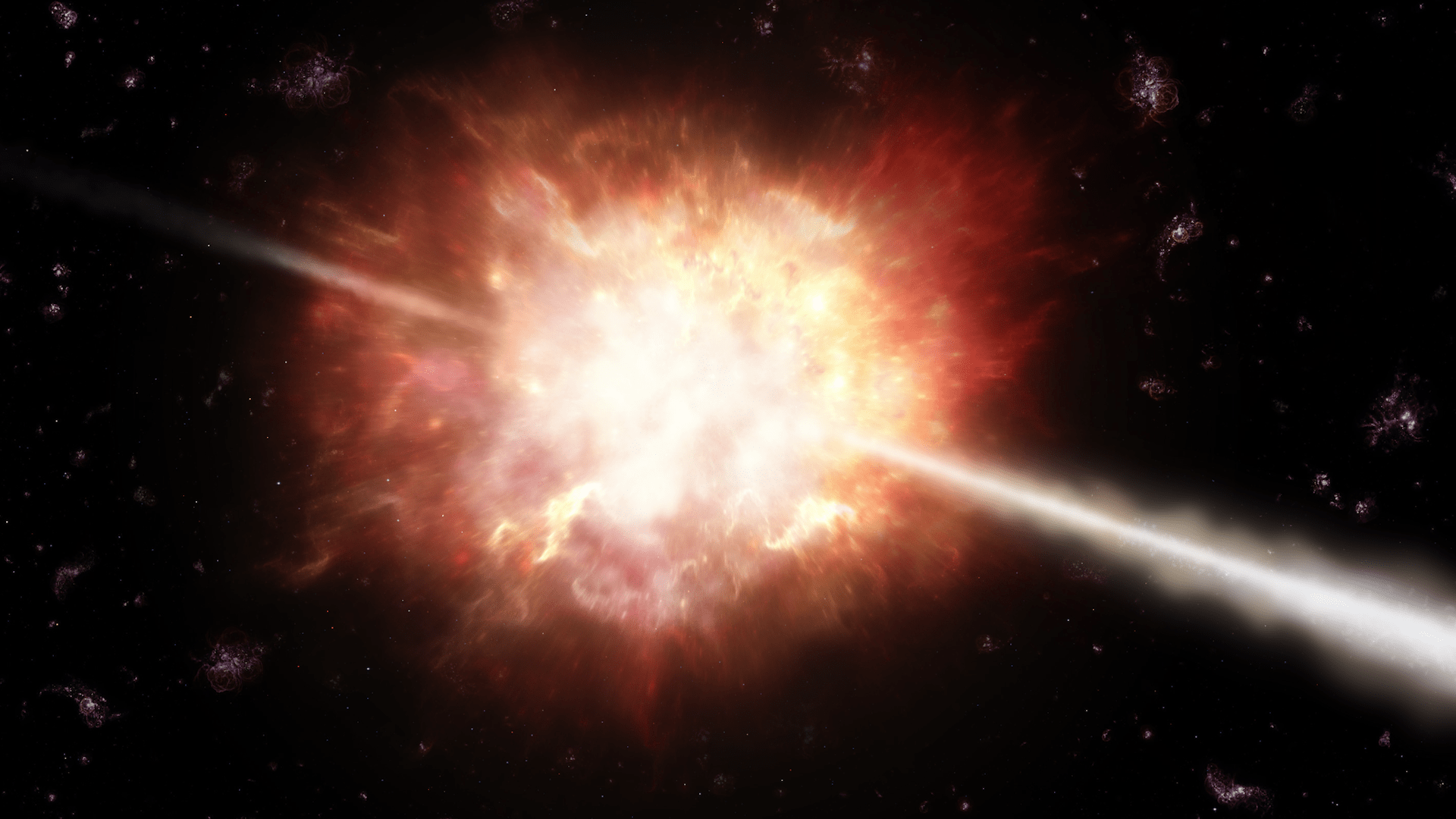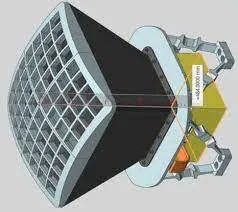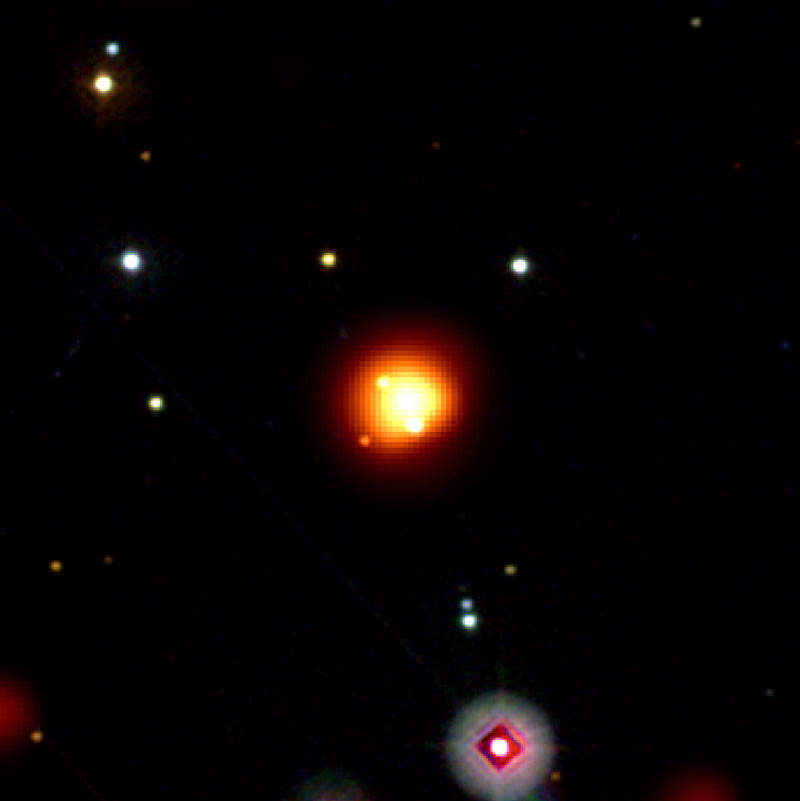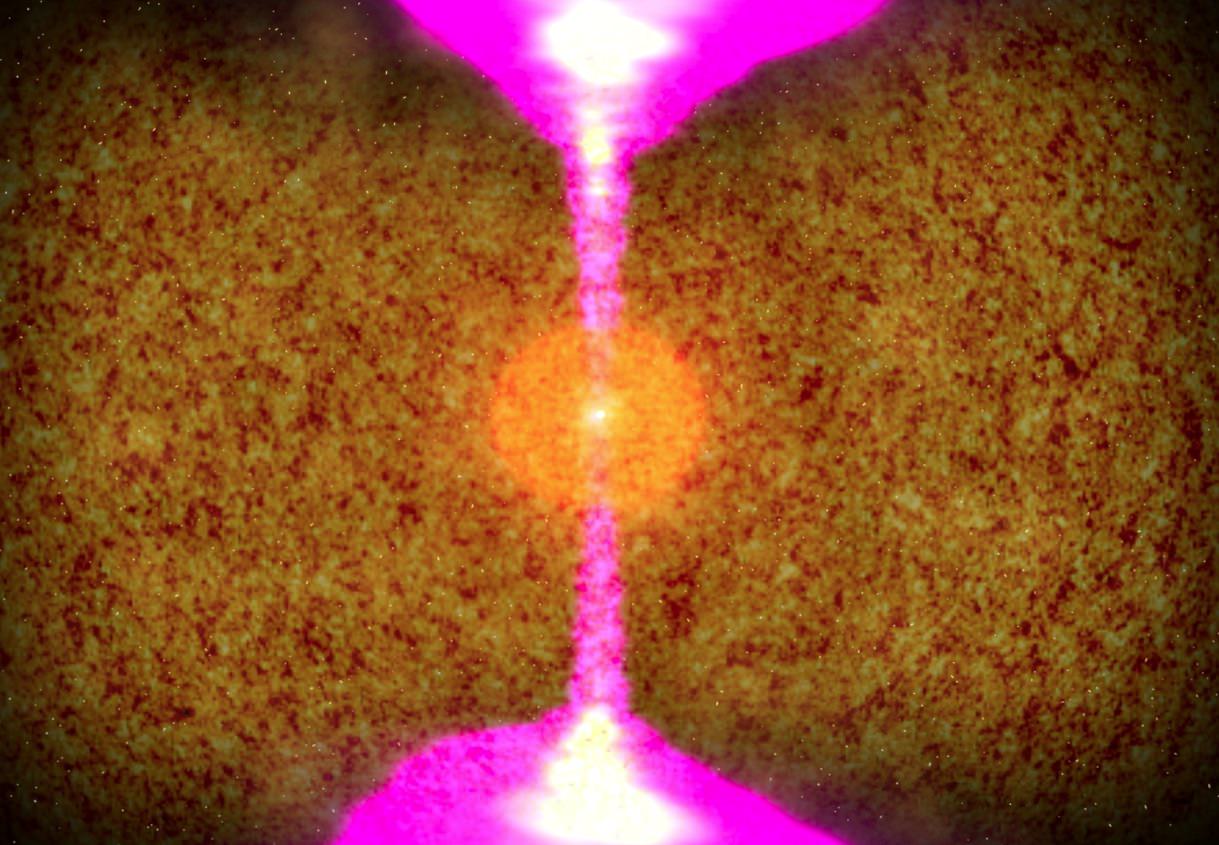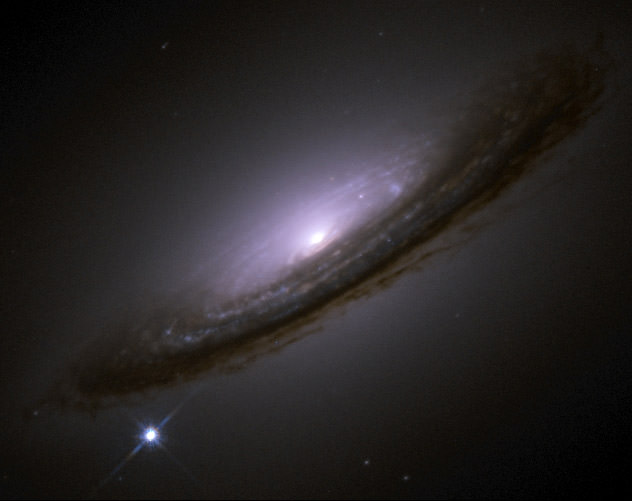The long-awaited detection of gravitational waves has opened up a whole new world of astronomy. One of the key efforts is now to tie signals across multiple domains – for example, a gravitational wave and the associated electromagnetic radiation created by that same event, such as a black hole merger or a gamma-ray burst. We’ll need new equipment to detect such “multimodal” signals, especially electromagnetic ones. One such project is the Black Hole Coded Aperture Telescope (BlackCAT), which will be launched early this year by a team led by researchers at Penn State.
Continue reading “A CubeSat Mission Will Detect X-rays from GRBs and Black-Hole Mergers”Astronomers Just saw the Most Powerful Gamma-ray Burst Ever Recorded
Gamma-ray bursts (GRBs) are one of the most mysterious transient phenomena facing astronomers today. These incredibly energetic bursts are the most powerful electromagnetic events observed since the Big Bang and can last from a few milliseconds to many hours. Whereas longer bursts are thought to occur during supernovae, when massive stars undergo gravitational collapse and shed their outer layer to become black holes, shorter events have also been recorded when massive binary objects (black holes and neutron stars) merge.
These bursts are characterized by an initial flash of gamma rays and a longer-lived “afterglow” typically emitted in X-ray, ultraviolet, radio, and other longer wavelengths. In the early-morning hours on October 14th, 2022, two independent teams of astronomers using the Gemini South telescope observed the aftermath of a GRB designated GRB221009A. Located 2.4 billion light-years away in the Sagitta constellation, this event was perhaps the closes and most powerful explosion ever recorded and was likely triggered by a supernova that gave birth to a black hole.
Continue reading “Astronomers Just saw the Most Powerful Gamma-ray Burst Ever Recorded”The Gamow Explorer Would be a new Gamma-ray Observatory to Search for the First Stars in the Universe… as They Explode
Gamma rays are useful for more than just turning unassuming scientists into green-skinned behemoths. They can also shine a light on the deaths of some of the earliest stars in the universe. More accurately, they are some of the light caused by the deaths of the earliest stars in the universe. Now, a team of scientists led by Nicholas White of George Washington University, and formerly of NASA’s Goddard Space Flight Center, has proposed an observatory mission that would scan the sky for evidence of Gamma-ray bursts (GRBs) and use them to understand the early universe.
Continue reading “The Gamow Explorer Would be a new Gamma-ray Observatory to Search for the First Stars in the Universe… as They Explode”Physicists Have Created an Artificial Gamma Ray Burst in the Lab

On July 2nd, 1967, the U.S. Vela 3 and 4 satellites noticed something rather perplexing. Originally designed to monitor for nuclear weapons tests in space by looking for gamma radiation, these satellites picked up a series of gamma-ray bursts (GRBs) coming from deep space. And while decades have passed since the “Vela Incident“, astronomers are still not 100% certain what causes them.
One of the problems has been that until now, scientists have been unable to study gamma ray bursts in any real capacity. But thanks to a new study by an international team of researchers, GRBs have been recreated in a laboratory for the first time. Because of this, scientists will have new opportunities to investigate GRBs and learn more about their properties, which should go a long away towards determining what causes them.
The study, titled “Experimental Observation of a Current-Driven Instability in a Neutral Electron-Positron Beam“, was recently published in the Physical Review Letters. The study was led by Jonathon Warwick from Queen’s University Belfast and included members from the SLAC National Accelerator Laboratory, The John Adams Institute for Accelerator Science, the Rutherford Appleton Laboratory, and multiple universities.
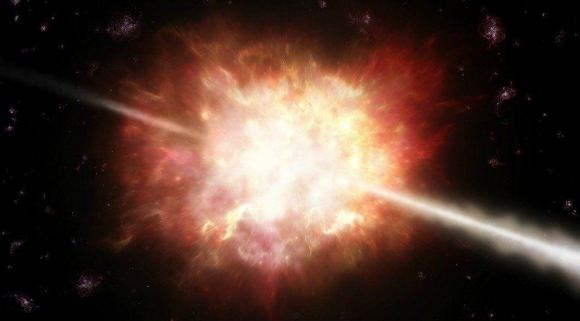
Until now, the study of GRBs have been complicated by two major issues. On the one hand, GRBs are very short lived, lasting for only seconds at a time. Second, all detected events have occurred in distant galaxies, some of which were billions of light-years away. Nevertheless, there are a few theories as to what could account for them, ranging from the formation of black holes and collisions between neutron stars to extra-terrestrial communications.
For this reason, investigating GRBs is especially appealing to scientists since they could reveal some previously-unknown things about black holes. For the sake of their study, the research team approached the question of GRBs as if they were related to the emissions of jets of particles released by black holes. As Dr. a lecturer at Queen’s University Belfast, explained in a recent op-ed piece with The Conversation:
“The beams released by the black holes would be mostly composed of electrons and their “antimatter” companions, the positrons… These beams must have strong, self-generated magnetic fields. The rotation of these particles around the fields give off powerful bursts of gamma ray radiation. Or, at least, this is what our theories predict. But we don’t actually know how the fields would be generated.”
With the assistance of their collaborators in the US, France, the UK and Sweden, the team from Queen’s University Belfast relied on the Gemini laser, located at the Rutherford Appleton Laboratory in the UK. With this instrument, which is one of the most powerful lasers in the world, the international collaboration sought to create the first small scale replica of GRBs.
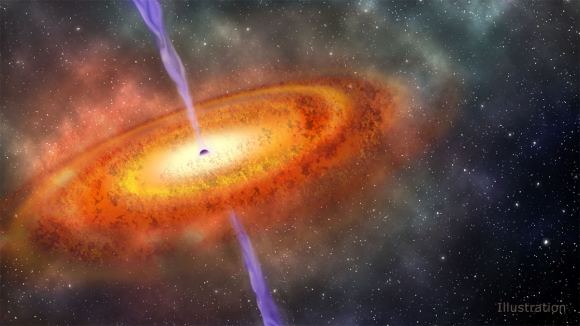
By shooting this laser onto a complex target, the team was able to create miniature versions of these ultra-fast astrophysical jets, which they recorded to see how they behaved. As Dr. Sarri indicated:
“In our experiment, we were able to observe, for the first time, some of the key phenomena that play a major role in the generation of gamma ray bursts, such as the self-generation of magnetic fields that lasted for a long time. These were able to confirm some major theoretical predictions of the strength and distribution of these fields. In short, our experiment independently confirms that the models currently used to understand gamma ray bursts are on the right track.”
This experiment was not only important for the study of GRBs, it could also advance our understanding about how different states of matter behave. Basically, almost all phenomena in nature come down to the dynamics of electrons, as they are much lighter than atomic nuclei and quicker to respond to external stimuli (such as light, magnetic fields, other particles, etc).
“But in an electron-positron beam, both particles have exactly the same mass, meaning that this disparity in reaction times is completely obliterated,” said Dr. Sarri. “This brings to a quantity of fascinating consequences. For example, sound would not exist in an electron-positron world.”

In addition, there is the aforementioned argument that GRBs could in fact be evidence of Extra-Terrestrial Intelligence (ETI). In the Search for Extra-Terrestrial Intelligence (SETI), scientists look for electromagnetic signals that do not appear to have natural explanations. By knowing more about different types of electromagnetic bursts, scientists could be better able to isolate those for which there are no known causes. As Dr. Sarri put it:
“Of course, if you put your detector to look for emissions from space, you do get an awful lot of different signals. If you really want to isolate intelligent transmissions, you first need to make sure all the natural emissions are perfectly known so that they can excluded. Our study helps towards understanding black hole and pulsar emissions, so that, whenever we detect anything similar, we know that it is not coming from an alien civilization.”
Much like research into gravitational waves, this study serves as an example of how phenomena that were once beyond our reach is now open to study. And much like gravitational waves, research into GRBs is likely to yield some impressive returns in the coming years!
Further Reading: The Conversation, Physical Review Letters
New Analysis Sets a Space & Time Zone for Complex Life
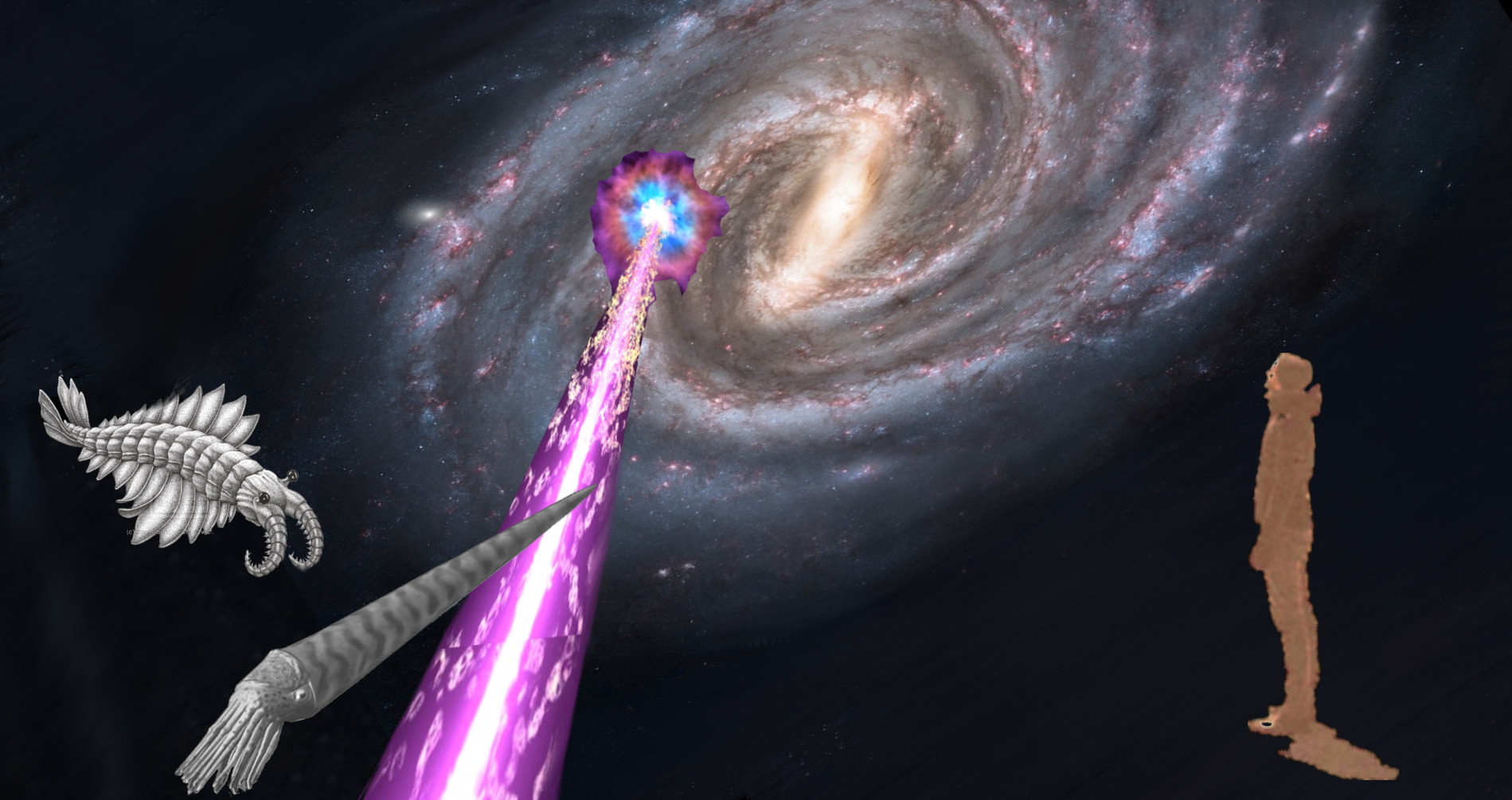
If too close to an environment harboring complex life, a gamma ray burst could spell doom for that life. But could GRBs be the reason we haven’t yet found evidence of other civilizations in the cosmos? To help answer the big question of “where is everybody?” physicists from Spain and Israel have narrowed the time period and the regions of space in which complex life could persist with a low risk of extinction by a GRB.
GRBs are some of the most cataclysmic events in the Universe. Astrophysicists are astounded by their intensity, some of which can outshine the whole Universe for brief moments. So far, they have remained incredible far-off events. But in a new paper, physicists have weighed how GRBs could limit where and when life could persist and evolve, potentially into intelligent life.
In their paper, “On the role of GRBs on life extinctions in the Universe”, published in the journal Science, Dr. Piran from Hebrew University and Dr. Jimenez from University of Barcelona consider first what is known about gamma ray bursts. The metallicity of stars and galaxies as a whole are directly related to the frequency of GRBs. Metallicity is the abundance of elements beyond hydrogen and helium in the content of stars or whole galaxies. More metals reduce the frequency of GRBs. Galaxies that have a low metal content are prone to a higher frequency of GRBs. The researchers, referencing their previous work, state that observational data has shown that GRBs are not generally related to a galaxy’s star formation rate; forming stars, including massive ones is not the most significant factor for increased frequency of GRBs.
As fate would have it, we live in a high metal content galaxy – the Milky Way. Piran and Jimenez show that the frequency of GRBs in the Milky Way is lower based on the latest data available. That is the good news. More significant is the placement of a solar system within the Milky Way or any galaxy.
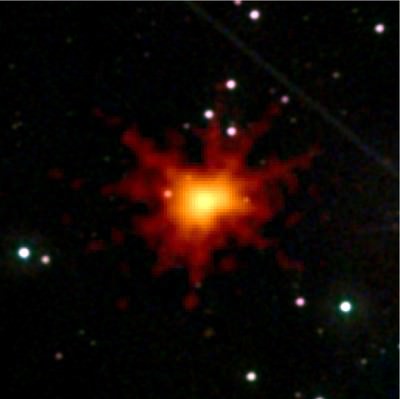
The paper states that there is a 50% chance of a lethal GRB’s having occurred near Earth within the last 500 million years. If a stellar system is within 13,000 light years (4 kilo-parsecs) of the galactic center, the odds rise to 95%. Effectively, this makes the densest regions of all galaxies too prone to GRBs to permit complex life to persist.
The Earth lies at 8.3 kilo-parsecs (27,000 light years) from the galactic center and the astrophysicists’ work also concludes that the chances of a lethal GRB in a 500 million year span does not drop below 50% until beyond 10 kilo-parsecs (32,000 light years). So Earth’s odds have not been most favorable, but obviously adequate. Star systems further out from the center are safer places for life to progress and evolve. Only the outlying low star density regions of large galaxies keep life out of harm’s way of gamma ray bursts.
The paper continues by describing their assessment of the effect of GRBs throughout the Universe. They state that only approximately 10% of galaxies have environments conducive to life when GRB events are a concern. Based on previous work and new data, galaxies (their stars) had to reach a metallicity content of 30% of the Sun’s, and the galaxies needed to be at least 4 kilo-parsecs (13,000 light years) in diameter to lower the risk of lethal GRBs. Simple life could survive repeated GRBs. Evolving to higher life forms would be repeatedly set back by mass extinctions.
Piran’s and Jimenez’s work also reveals a relation to a cosmological constant. Further back in time, metallicity within stars was lower. Only after generations of star formation – billions of years – have heavier elements built up within galaxies. They conclude that complex life such as on Earth – from jelly fish to humans – could not have developed in the early Universe before Z > 0.5, a cosmological red-shift equal to ~5 billion years ago or longer ago. Analysis also shows that there is a 95% chance that Earth experienced a lethal GRB within the last 5 billion years.
The question of what effect a nearby GRB could have on life has been raised for decades. In 1974, Dr. Malvin Ruderman of Columbia University considered the consequences of a nearby supernova on the ozone layer of the Earth and on terrestrial life. His and subsequent work has determined that cosmic rays would lead to the depletion of the ozone layer, a doubling of the solar ultraviolet radiation reaching the surface, cooling of the Earth’s climate, and an increase in NOx and rainout that effects biological systems. Not a pretty picture. The loss of the ozone layer would lead to a domino effect of atmospheric changes and radiation exposure leading to the collapse of ecosystems. A GRB is considered the most likely cause of the mass extinction at the end of the Ordovician period, 450 million years ago; there remains considerable debate on the causes of this and several other mass extinction events in Earth’s history.
The paper focuses on what are deemed long GRBs – lGRBs – lasting several seconds in contrast to short GRBs which last only a second or less. Long GRBs are believed to be due to the collapse of massive stars such as seen in supernovas, while sGRBs are from the collision of neutron stars or black holes. There remains uncertainty as to the causes, but the longer GRBs release far greater amounts of energy and are most dangerous to ecosystems harboring complex life.
The paper narrows the time and space available for complex life to develop within our Universe. Over the age of the Universe, approximately 14 billion years, only the last 5 billion years have been conducive to the creation of complex life. Furthermore, only 10% of the galaxies within the last 5 billion years provided such environments. And within only larger galaxies, only the outlying areas provided the safe distances needed to evade lethal exposure to a gamma ray burst.
This work reveals how well our Solar System fits within the ideal conditions for permitting complex life to develop. We stand at a fairly good distance from the Milky Way’s galactic center. The age of our Solar System, at approximately 4.6 billion years, lies within the 5 billion year safe zone in time. However, for many other stellar systems, despite how many are now considered to exist throughout the Universe – 100s of billions in the Milky Way, trillions throughout the Universe – simple is probably a way of life due to GRBs. This work indicates that complex life, including intelligent life, is likely less common when just taking the effect of gamma ray bursts into consideration.
References:
On the role of GRBs on life extinction in the Universe, Tsvi Piran, Raul Jimenez, Science, Nov 2014, pre-print
Possible Gamma Ray Burst Detected in Andromeda, Would be Closest Ever Observed
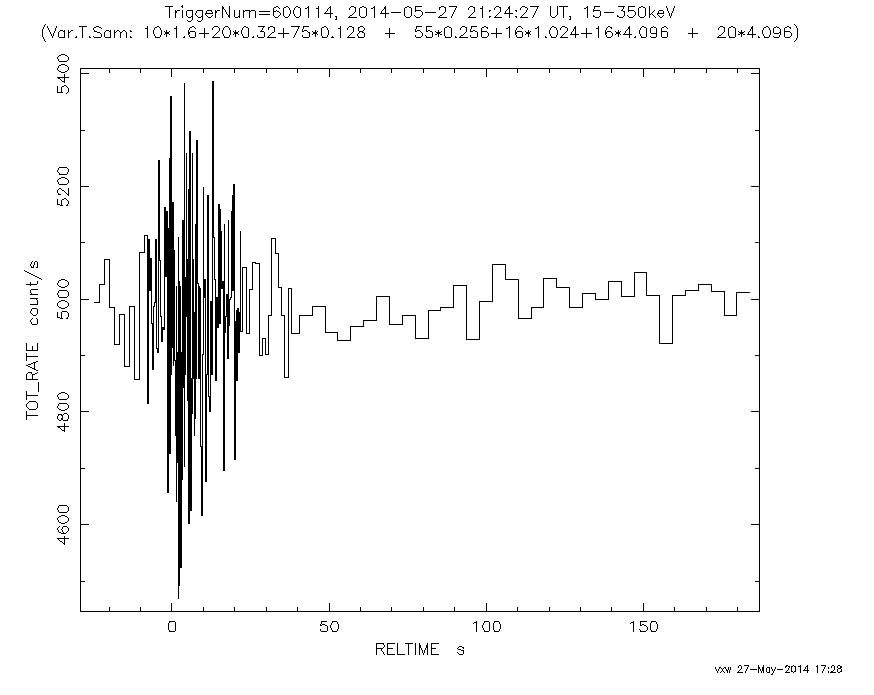
Update (5/28/14 9:20 am EDT): This alert may have been a false alarm. Further analysis showed the initial brightness was overestimated by a factor of 300. An official circular from the Swift-XRT team says “therefore do not believe this source to be in outburst. Instead, it was a serendipitous constant source in the field of view of a BAT subthreshold trigger.” Please read our subsequent article here that provides further information and analysis.
Something went boom in the Andromeda Galaxy, our next door neighbor. The Swift Gamma-Ray Burst telescope detected a sudden bright emission of gamma rays. Astronomers aren’t sure yet if it was a Gamma-Ray Burst (GRB) or an Ultraluminous X-Ray (ULX) or even an outburst from a low-mass x-ray binary (LMXB), but whatever it turns out to be, it will be the closest event of this kind that we’ve ever observed.
One of the previous closest GRBs was 2.6 billion light-years away, while Andromeda is a mere 2.5 million light years away from Earth. Even though this would be the closest burst to Earth, there is no danger of our planet getting fried by gamma rays.
According to astronomer (Bad Astronomer!) Phil Plait, a GRB would have to be less than 8,000 light years away cause any problems for us.
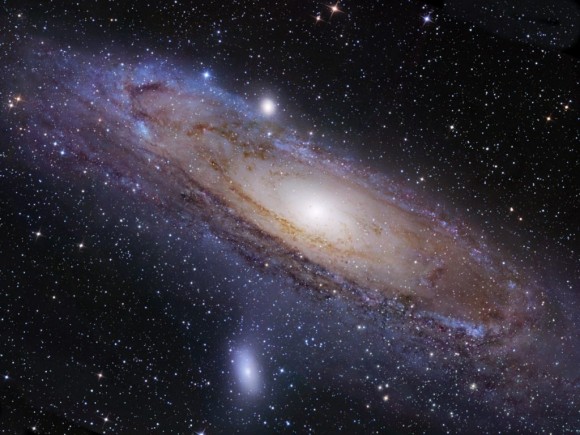
This event is providing astronomers with a rare opportunity to gain information vital to understanding powerful cosmic explosions like this.
If it is a GRB, it likely came from a collision of neutron stars. If it is a ULX, the blast came from a black hole consuming gas. If the outburst was from a LMXB, a black hole or neutron star annihilated its companion star.
Astronomers should be able to determine the pedigree of this blast within 24-48 hours by watching the way the light fades from the burst.
How this Blast was Detected
The Swift Burst Alert telescope watches the sky for gamma-ray bursts and, within seconds of detecting a burst Swift relays the location of the burst to ground stations, allowing both ground-based and space-based telescopes around the world the opportunity to observe the burst’s afterglow. As soon as it can, Swift will swiftly shift itself to observe the burst with its X-ray and ultraviolet telescopes.
The burst alert came at 21:21 pm Universal time on May 27, 2014; three minutes later, the X-ray telescope aboard Swift was observing a bright X-ray glow.
News of the event quickly spread across the astronomical community and on Twitter, sending astronomers scrambling for their telescopes.
Remember scene in Contact where they got a weird signal & called up astronomers all over the world to look? That happens for GRBs. #GRBm31
— Katie Mack (@AstroKatie) May 27, 2014
According to astronomer Katie Mack on Twitter, if this is indeed a GRB, this gamma-ray burst looks like a short GRB.
No two GRBs are the same, but they are usually classified as either long or short depending on the burst’s duration. Long bursts are more common and last for between 2 seconds and several minutes; short bursts last less than 2 seconds, meaning the action can all be over in just milliseconds.
As we noted earlier, more should be known about this blast within a day or so and we’ll keep you posted. In the meantime, you can follow the hashtag #GRBM31 on Twitter to see the latest. Katie Mack or Robert Rutledge (Astronomer’s Telegram) have been tweeting pertinent info about the burst.
X-ray Burst May Be the First Sign of a Supernova
GRB 080913, a distant supernova detected by Swift. This image merges the view through Swift’s UltraViolet and Optical Telescope, which shows bright stars, and its X-ray Telescope. Credit: NASA/Swift/Stefan Immler
The first moments of a massive star going supernova may be heralded by a blast of x-rays, detectable by space telescopes like Swift, which could then tell astronomers where to look for the full show in gamma rays and optical wavelengths. These findings come from the University of Leicester in the UK where a research team was surprised by the excess of thermal x-rays detected along with gamma ray bursts associated with supernovae.
“The most massive stars can be tens to a hundred times larger than the Sun,” said Dr. Rhaana Starling of the University of Leicester Department of Physics and Astronomy. “When one of these giants runs out of hydrogen gas it collapses catastrophically and explodes as a supernova, blowing off its outer layers which enrich the Universe.
“But this is no ordinary supernova; in the explosion narrowly confined streams of material are forced out of the poles of the star at almost the speed of light. These so-called relativistic jets give rise to brief flashes of energetic gamma-radiation called gamma-ray bursts, which are picked up by monitoring instruments in space, that in turn alert astronomers.”
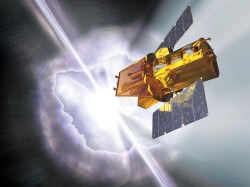 Powerful gamma ray bursts — GRBs — emitted from supernovae can be detected by both ground-based observatories and NASA’s Swift telescope. Within seconds of detecting a burst (hence its name) Swift relays its location to ground stations, allowing both ground-based and space-based telescopes around the world the opportunity to observe the burst’s afterglow.
Powerful gamma ray bursts — GRBs — emitted from supernovae can be detected by both ground-based observatories and NASA’s Swift telescope. Within seconds of detecting a burst (hence its name) Swift relays its location to ground stations, allowing both ground-based and space-based telescopes around the world the opportunity to observe the burst’s afterglow.
But the actual moment of the star’s collapse, when its collapsing core reacts with its surface, isn’t observed — it happens too quickly, too suddenly. If these “shock breakouts” are the source of the excess thermal x-rays (a.k.a. black body emission) that have been recently identified in Swift data, some of the galaxy’s most energetic supernovae could be pinpointed and witnessed at a much earlier moment in time — literally within the first seconds of their birth.
“This phenomenon is only seen during the first thousand seconds of an event, and it is challenging to distinguish it from X-ray emission solely from the gamma-ray burst jet,” Dr. Starling said. “That is why astronomers have not routinely observed this before, and only a small subset of the 700+ bursts we detect with Swift show it.”
Read more: Finding the Failed Supernovae
More observations will be needed to determine if the thermal emissions are truly from the initial collapse of stars and not from the GRB jets themselves. Even if the x-rays are determined to be from the jets it will provide valuable insight to the structure of GRBs… “but the strong association with supernovae is tantalizing,” according to Dr. Starling.
Read more on the University of Leicester press release here, and see the team’s paper in the Nov. 28 online issue of the Monthly Notices of the Royal Astronomical Society here (Full PDF on arXiv.org here.)
Inset image: An artist’s rendering of the Swift spacecraft with a gamma-ray burst going off in the background. Credit: Spectrum Astro. Find out more about the Swift telescope’s instruments here.
Did a Neutron Star Create the “Christmas Burst”?
[/caption]
On December 25, 2010, at 1:38 p.m. EST, NASA’s Swift Burst Alert Telescope detected a particularly long-lived gamma-ray burst in the constellation Andromeda. Lasting nearly half an hour, the burst (known as GRB 101225A) originated from an unknown distance, leaving astronomers to puzzle over exactly what may have created such a dazzling holiday display.
Now there’s not just one but two theories as to what caused this burst, both reported in papers by a research team from the Institute of Astrophysics in Granada, Spain. The papers will appear in the Dec. 1 issue of Nature.
Gamma-ray bursts are the Universe’s most luminous explosions. Most occur when a massive star runs out of nuclear fuel. As the star’s core collapses, it creates a black hole or neutron star that sends intense jets of gas and radiation outwards. As the jets shoot into space they strike gas previously shed by the star and heat it, generating bright afterglows.
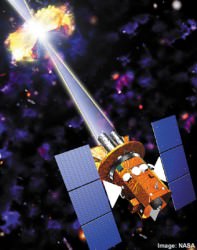
If a GRB jet happens to be aimed towards Earth it can be detected by instruments like those aboard the Swift spacecraft.
Luckily GRBs usually come from vast distances, as they are extremely powerful and could potentially pose a danger to life on Earth should one strike directly from close enough range. Fortunately for us the odds of that happening are extremely slim… but not nonexistent. That is one reason why GRBs are of such interest to astronomers… gazing out into the Universe is, in one way, like looking down the barrels of an unknown number of distant guns.
The 2010 “Christmas burst”, as the event also called, is suspected to feature a neutron star as a key player. The incredibly dense cores that are left over after a massive star’s death, neutron stars rotate extremely rapidly and have intense magnetic fields.
One of the new theories envisions a neutron star as part of a binary system that also includes an expanding red giant. The neutron star may have potentially been engulfed by the outer atmosphere of its partner. The gravity of the neutron star would have caused it to acquire more mass and thus more momentum, making it spin faster while energizing its magnetic field. The stronger field would have then fired off some of the stellar material into space as polar jets… jets that then interacted with previously-expelled gases, creating the GRB detected by Swift.
This scenario puts the source of the Christmas burst at around 5.5 billion light-years away, which coincides with the observed location of a faint galaxy.
An alternate theory, also accepted by the research team, involves the collision of a comet-like object and a neutron star located within our own galaxy, about 10,000 light-years away. The comet-like body could have been something akin to a Kuiper Belt Object which, if in a distant orbit around a neutron star, may have survived the initial supernova blast only to end up on a spiraling path inwards.
The object, estimated to be about half the size of the asteroid Ceres, would have broken up due to tidal forces as it neared the neutron star. Debris that impacted the star would have created gamma-ray emission detectable by Swift, with later-arriving material extending the duration of the GRB into the X-ray spectrum… also coinciding with Swift’s measurements.
Both of these scenarios are in line with processes now accepted by researchers as plausible explanations for GRBs thanks to the wealth of data provided by the Swift telescope, launched in 2004.
“The beauty of the Christmas burst is that we must invoke two exotic scenarios to explain it, but such rare oddballs will help us advance the field,” said Chryssa Kouveliotou, a co-author of the study at NASA’s Marshall Space Flight Center in Huntsville, Alabama.
More observations using other instruments, such as the Hubble Space Telescope, will be needed to discern which of the two theories is most likely the case… or perhaps rule out both, which would mean something else entirely is the source of the 2010 Christmas burst!
Read more on the NASA mission site here.
What is a Supernova?
[/caption]
What is a supernova? Well, “nova” means “new star”, and “super” means “really big”, like supermarket, so a supernova is a really bright new star. That’s where the word comes from, but today it has a rather more precise meaning, namely a once-off variable star which has a peak brightness similar to, or greater than, that of a typical galaxy.
Supernovae aren’t new stars in the sense that they were not stars before they became supernovae; the progenitor – what the star was before it went supernova – of a supernova is just a star (or a pair of stars), albeit an unusual one.
From what we see – the rise of the intensity of light (and electromagnetic radiation in general) to a peak, its decline; the lines which show up in the spectra (and the ones which don’t), etc – we can classify supernovae into several different types. There are two main types, called Type I and Type II. The difference between them is that Type I supernovae have no lines of hydrogen in their spectra, while Type II ones do.
Centuries of work by astronomers and physicists have given us just two kinds of progenitors: white dwarfs and massive (>8 sols) stars; and just two key physical mechanisms: nuclear detonation and core collapse.
Core collapse supernovae happen when a massive star tries to fuse iron in its core … bad move, because fusing iron requires energy (rather than liberates it), and the core suddenly collapses due to its gravity. A lot of interesting physics happens when such a core collapses, but it either results in a neutron star or a black hole, and a vast amount of energy is produced (most of it in the form of neutrinos!). These supernovae can be of any type, except a sub-type of Type I (called Ia). They also produce the long gamma-ray bursts (GRB).
Detonation is when a white dwarf star undergoes almost simultaneous fusion of carbon or oxygen throughout its entire body (it can do this because a white dwarf has the same temperature throughout, unlike an ordinary star, because its electrons are degenerate). There are at least two ways such a detonation can be triggered: steady accumulation of hydrogen transferred from a close binary companion, or a collision or merger with a neutron star or another white dwarf. These supernovae are all Type Ia.
One other kind of supernova: when two neutron stars merge, or a ~solar mass black hole and a neutron star merge – as a result of loss of orbital energy due to gravitational wave radiation – an intense burst of gamma-rays results, along with a fireball and an afterglow (as the fireball cools). We see such an event as a short GRB, but if we were unlikely enough to be close to such a stellar death, we’d certainly see it as a spectacular supernova!
Would you like to read more about what a supernova is? Check out these webpages: Hubblesite’s News Releases on Supernova, Supernova Cosmology Project (Lawrence Berkeley Lab), and Supernovae, Supernova Remnants (etc) (Talk Origins).
Everyone has a fascination for things which go bang!, and so you won’t be at all surprised to learn that Universe Today has many articles on supernovae, what a supernova is, etc. Here is selection for your enjoyment and education: Merging White Dwarfs Set Off Supernovae, GRB Central Engines Observed in Nearby Supernovae?, and Another Antimatter Supernova Discovered.
Astronomy Cast too has several episodes on what a supernova is; for example We’re All Made of Supernovae, and Gamma-Ray Bursts.
Reference:
NASA


